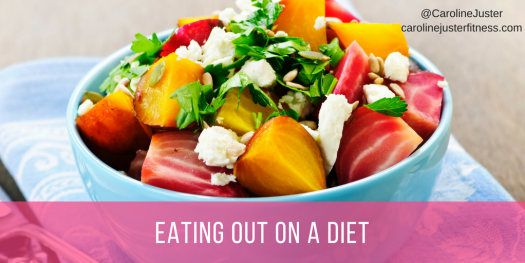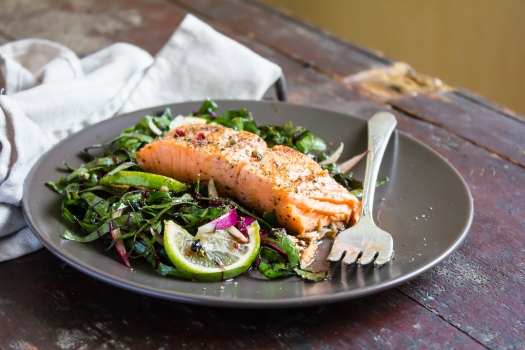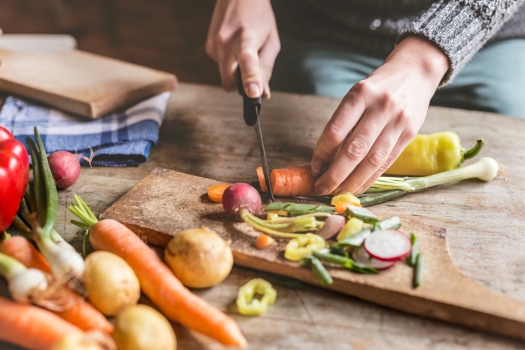Most of my clients are busy professionals. The biggest nutrition downfall for this group is constantly eating out for lunch. My clients repeatedly tell me about their struggles to find time or inspiration to pack lunches from home and the huge temptation of hundreds of restaurants right outside their office. This often leads them to consume excessive calories, ultimately preventing them from losing weight or feeling their best.
Like all changes to your eating or exercise routine, bringing lunch from home is a habit that requires planning, practice, and consistent execution to master. This article summarizes the benefits of bringing lunch from home and outlines my two favorite approaches to building this habit.
Packing your lunch has several benefits. First, preparing your own food gives you more control over what you eat. You can pack appropriate portions and ensure all of the ingredients in your meal work for your body and your eating plan. This makes it much easier to make healthy choices and avoid temptation. Second, bringing your own lunch can help you save hundreds of dollars over the course of a month. You may be surprised at how quickly the cost of restaurant lunches adds up, especially if you are eating out everyday of the week. Grocery shopping gets you much more bang for your buck.
Meal Templates
Many people want to bring lunches, but struggle to develop the habit of preparing food day after day. There are two ways to make this process easier. The first is to use meal templates to eat similar meals every day.
A meal template provides the basic construction of a meal while allowing some flexibility with individual ingredients. Templates can be based on anything. Some popular ideas center around a type of dish (salad, soup, chili), ethnic cuisines (taco Tuesday, Indian food, Mediterranean food), a particular protein (steak, fish, pork), or a certain method of cooking (slow cooker, Instant pot, sheet pan dinner). Meal templates help you avoid decision fatigue while still providing diversity to avoid food boredom. The preparation and primary ingredients remain the same as you rotate seasonings, sides, added vegetables, cooking fats, or other minor components of the meal to change up the flavor or character of the dish.
My Favorite Templates
Rather than coming up with a complicated meal plan consisting of different lunches every day, choose one or two meal templates that you enjoy and are easy to put together. I have used two simple meal templates to successfully pack my lunches for years.
The first is a salad. Every salad consists of some kind of chopped lettuce or greens, protein (usually canned chicken, tuna, or salmon or leftover protein from dinners), a variety of chopped vegetables, and a homemade dressing made from an oil, an acid (lemon or lime juice, vinegar, etc.) and seasonings.
The second template I use regularly is grilled protein with steamed vegetables. I use my George Foreman Grill to rapidly cook beef, turkey, or chicken burgers; chicken breasts or thighs; or lean pork chops. I always have a few spice blends in my pantry for easy and delicious seasoning. My vegetable side alternates between steamed broccoli, cauliflower, brussels sprouts, asparagus, and carrots.
Both of these meals take minimal time to put together and allow enough variety that I don’t get bored. For example, my favorite salad is inspired by southwestern flavor and includes lime juice, avocado oil, cilantro, red onion, tomatoes, bell pepper, and chicken. Another salad is much sweeter, using spinach, strawberries, mushrooms, red onion, tomatoes, salmon, olive oil, and apple cider vinegar. The preparation time and method for these meals is exactly the same, but they taste very different.
Leftovers
Another way to easily pack lunches without a lot of extra effort is to take advantage of leftovers. Instead of cooking just enough food for one dinner, try doubling or tripling the recipe so you have enough food to take for lunch the next day. To maximize your cooking time, consider setting aside an hour or two on the weekend to cook a large dish that you can portion into daily lunches. This works especially well with one-pot dishes like soups, chilis, stews, roasted vegetables, and baked dishes. Grains like rice, oats, and quinoa are also much easier to prepare in large batches.
If you get food boredom easily, repurpose your leftovers into different meals for some variety. I like to use leftover protein in salads and scrambled eggs. You can also add cooked ingredients to sandwiches, soups, pasta, or grain bowls. The possibilities are truly endless if you are creative and open to new food combinations. You may be surprised at what foods work well together as you stumble upon some new favorite lunches.
Lose weight, Save Money, Feel Better
Packing your own lunch is one of the best ways to improve your eating habits and general health. You will also save money so you can spend more on truly meaningful meals and social outings or enjoy other things in your life.
If you struggle to bring lunch, start by cooking more at one or two dinners each week so you have a couple of leftover lunches. Once you succeed with that, pick a meal template to use for the remainder of the week’s lunches. Don’t be afraid to eat the same things every week or to experiment with totally new dishes and combinations of food. Remember, success with healthy eating requires you to adopt habits you can realistically sustain over the long term.
If you want more practical advice, check out Eleven Easy Meal Templates. I compiled my personal favorite meals into this totally free PDF guide. Sign up using the box below.








